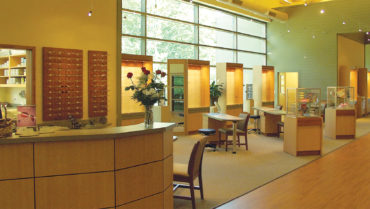Eye Centers of Tennessee (ECOTN) is a sterling example of the classic, hard-working, comprehensive ophthalmology practice that eschews niche marketing and specialization in favor of doing it all—leaving no ocular segment untreated. Practice owner Larry E. Patterson, MD, who opened his first office in 1988 and launched ECOTN a decade later with the help of practice administrator Ray Mays, says ECOTN has grown at an annual rate of approximately 5% to 10% every year, regardless of economic ebbs.
The practice has long had a busy and burgeoning refractive cataract component and a bustling optical business. In 2016, Dr. Patterson’s son, Michael Patterson, DO, joined the practice, bringing with him experience in microinvasive glaucoma surgery, oculoplastics, and a talent for treating complicated surgical cases.
Today, dry eye management and intravitreal injections also play significant roles in ECOTN’s healthy bottom line. The comprehensive practice, with four locations throughout Tennessee, has a permanent chair at the top revue generators’ table, and, without divulging specifics, its founder is happy to says that it has doubled its revenue in the past 5 years.
In this Practice Profile, the trio (Patterson, Patterson, and Mays) describes what makes the practice successful, unique, and a model for others aspiring to steady growth and long-term prosperity.
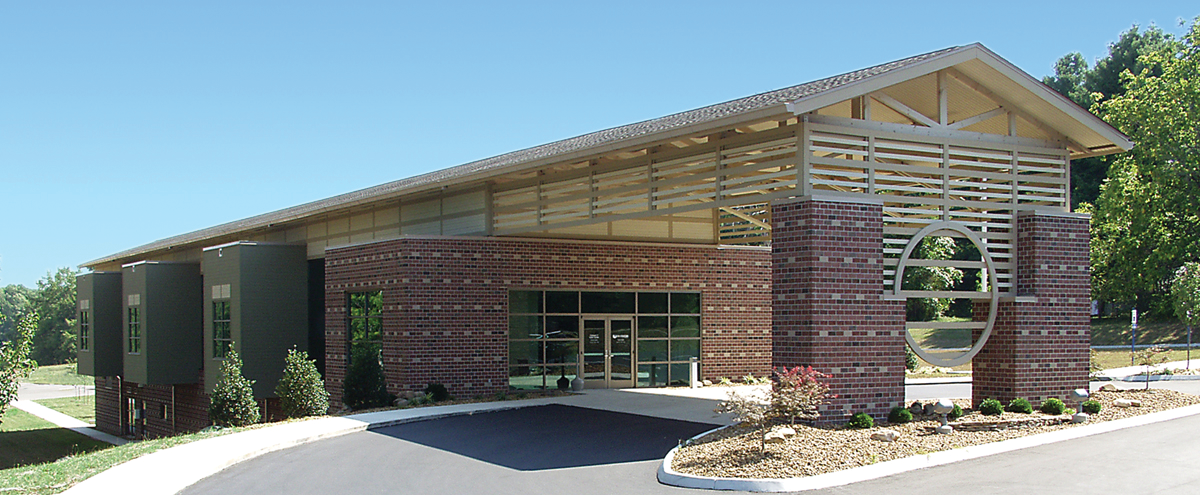
The exterior of one location of the Eye Centers of Tennessee.
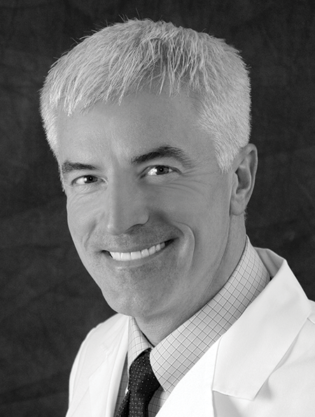
Larry Patterson, MD:
The Successful Ophthalmic Surgery Veteran
CRST: How have things changed with respect to practicing ophthalmic surgery since you started out in the late 1980s?
In some respects, the 1980s were the glory days. However, cataract surgery was not nearly as advanced as it is now; we had lots of problems with removing sutures and dealing with astigmatism, and there were no refractive surgery options for cataract patients. It required more postoperative visits, and, in general, there was a lot more work involved. We are reimbursed less for cataract surgery now, but what we are able to do has improved so much. I would not trade what we have now for those days, for anything.
My first surgical cataract case in private practice, in 1988, was with phacoemulsification. There were some big-name surgeons who were doing phaco back then, but only a small percentage of the rest of us had embraced it. I was actually criticized for doing phaco by the local ophthalmologists who were still doing extracapsular cataract extraction.
CRST: How has your practice evolved over the years?
I hung my first shingle by leasing a 1,700 ft2 space from a medical group. Whatever marketing we did was minimal, but I had 12 patients my first day, which was amazing. A little more than 3 years in, I bought a piece of land and had my first freestanding clinic built. It was 5,000 ft2, which represented a huge jump in my practice’s size. By then, although I was still a solo practitioner, we had two opticians and four staff members. Today, we have four locations, including our main office, which is 20,000 ft2 with a surgery center on one level and the clinic on another, and we employ close to 100 people.
CRST: What tips would you share with others who aspire to similar growth?
One thing that I want to stress is, if you think your practice is going to grow, build a parking lot much bigger than you think you’ll ever need. It’s really hard to expand later if you don’t have any more land. Also, we have grown every year, even during economic downturns, because I believe in diversification.
People often think of a diversified retirement portfolio as one that has money spread among various stocks and mutual funds. I don’t consider that diversified because it’s all money. I think you ought to have some money in raw real estate. The same goes for a diversified practice. We own all four of our locations, as I believe in investing in real estate (as well as in gold and silver, among other things).
The biggest thing you want to invest in is your own practice. That’s something you actually know—that you can see, touch, and feel. Your practice represents a profit-making machine for your current as well as your future situation. I think the three primary things that an ophthalmologist ought to be invested in are his or her facility, an optical department, and a ambulatory surgery center (ASC). I’m seeing more and more people catching on to that, and I’m beginning to hear consultants recommend that strategy, too.

The ambulatory surgery center at one of ECOTN’s locations.
CRST: What made you start an optical shop?
Starting out, I had no interest in having an optical department. Then we had one patient after another expressing disappointment that they had come to us to get an eye exam and glasses, and although they were able to get an eye exam, they couldn’t get glasses. They were annoyed that they had to go somewhere else for their glasses. Our initial thought was that we could make a little money off of starting an optical business, so we hired an optician. We soon learned what the optometrists knew all along: If run and managed well, optical is a huge profit center. Today, we have 13 opticians, and optical is one of our largest revenue streams.
CRST: What makes ECOTN excellent?
I think it’s the people. Everyone on our staff is down to earth; they’re smart, they’re friendly, and they’re personable. We constantly get positive comments from patients about our staff. When a patient says, “It seems like you are doing really well, what’s the deal?” I say, “No. 1, we have the best people; No. 2, we have the best equipment and we keep everything modern and up to date; No. 3, we have great facilities; and No. 4, we have the best doctors. I put us last—not out of some sort of false humility—but because it’s true that our staff and our doctors are exceptional. We do not see competitors anywhere within several hours of us who have a nicer facility or better equipment and certainly not nicer staff.
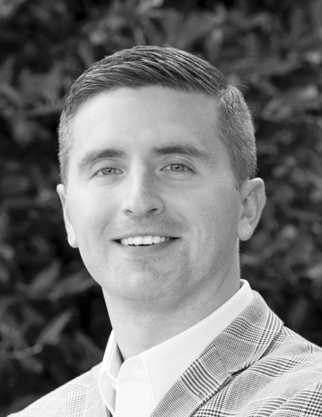
Michael Patterson, DO:
The Master of Innovative Techniques and the Millennial Perspective
CRST: How would you describe ECOTN?
We have a unique model in that at ECOTN we treat pretty much everything (for more information, see Subspecialties: Doing It All; Reaping the Benefits below). The only things we refer out are pediatric surgery and retina surgery. The way I see it, we’re not a massive practice, but we have a massive volume. My dad sees about 130 patients per week, I see about 200 patients per week, and one of our optometrists sees 65 to 70 patients per day. We also own an ASC, where we performed about 3,400 procedures in 2017. Since I joined the practice, we have been able to ratchet up referrals significantly, resulting in about an 80% increase in surgical volume.
Subspecialties:
Doing It All; Reaping the Benefits
Eye Centers of Tennessee (ECOTN) has grown into a powerhouse income generator by remaining committed to providing comprehensive ophthalmic care and diversifying into lucrative, high-demand revenue streams. Optical, oculoplastics, dry eye management, and hearing services complement ECOTN’s provision of traditional ophthalmic medical and surgical services.
Optical
- ECOTN has its own manufacturing department; glasses can be turned around in 24 hours.
- Optical is ECOTN’s most profitable revenue stream—in the seven-figure range.
- When outside optometrists refer surgery patients to ECOTN, those patients are always returned to the referring optometrist for purchase of spectacles.
- ECOTN has been approached by outside companies interested in buying the optical department; they say they’ll never sell.
Oculoplastics
- Michael Patterson, DO, does upper and lower blepharoplasties, entropion and ectropion surgery, and ptosis surgery.
- He performs about 20 bilateral blepharoplasties per month. The bilateral procedure takes him about 13 minutes. He says, “If you can create efficiency, blepharoplasty can be as lucrative as cataract surgery.”
Hearing
- Every ECOTN patient 55 years or older gets a complimentary 20-second hearing screening.
- Once seen by his or her eye care provider, each patient is told whether he or she failed or passed the test and asked if he or she would like a free consultation with one of ECOTN’s hearing specialists.
- The hearing department is growing, and a second hearing specialist is being hired.
Dry Eye Management
- Every patient is managed in total with dry eye. ECOTN recommends »Omega-3 Fish Oil (Physician Recommended Nutriceuticals), performs TearLab osmolarity testing and Schirmer testing, and uses the Ocular Surface Disease Index for management decisions.
- Patients are exposed to the latest technologies and medications to manage the complex disease of dry eye.
Retina
- ECOTN physicians perform their own angiograms, autofluorescence imaging, and macular OCTs.
- Intravitreal injections are 30% of ECOTN’s practice. Michael Patterson, DO, trained in retina with the renowned Jack Wells, MD.
- Those rare patients who require retina surgery are referred out.
Glaucoma
- ECOTN providers manage mild to severe glaucoma. They are on the cutting edge of using every new device for microinvasive glaucoma surgery and advanced glaucoma surgery.
- Glaucoma surgery is performed weekly in ECOTN facilities.
CRST: What about ECOTN’s model helps build volume?
An appointment is always available. No matter what day a patient calls, they are guaranteed to be seen within 24 hours. There’s no waiting weeks or months for an opening. We’ve built our practice around the promise that we will take anyone at any time, and that includes referrals from hospitals and primary care physicians. If someone has an eye problem, they can call our office and be seen that day.
CRST: Can you pinpoint something that separates ECOTN from other practices?
Something that separates us from a lot of places is that we utilize our optometrists to see a lot of patients. We have four in-house ODs, and we turn over to them almost everything that’s nonsurgical, although my father still does see some nonsurgical patients and we also have a medical ophthalmologist on staff. The optometrists benefit tremendously from this paradigm, and we benefit from it tremendously as well. It is truly a symbiotic relationship.
CRST: What has your addition to the ECOTN team meant for the practice?
When I came aboard, they weren’t sure I was going to have a lot to do. But since I’ve been here, we’ve almost doubled our volume without any marketing. My father did not do a lot of oculoplastics or significant glaucoma surgery, and I’m doing a substantial amount of both. I also do a lot of complex surgeries, such as dislocated implants and Gore-Tex–sutured IOLs, among other things.
CRST: What makes ECOTN excellent or unique?
I think the unique factor is that we have truly comprehensive ophthalmology in an age when comprehensive ophthalmology practices have all but disappeared. We do everything in-house; we even make our own lenses for the glasses we dispense. We do not outsource anything. We are as lean as you can possibly be, and we have very hard workers.
I would say the main thing that differentiates us is our staff; our employees are just incredible. We have about 15 employees who have been with us for more than 20 years. We show our appreciation by providing top-notch benefits, as well as by giving gifts such as a trip to Hawaii in appreciation for 5 years of service. We run a lean process to be able to provide our staff with good bonuses and good overall quality of life.
Men (and Women) on a Mission
Tennessee is known as the Volunteer State, and Eye Centers of Tennessee does its part to reflect that. Last year, Larry E. Patterson, MD, Michael Patterson, DO, and two ECOTN scrub technicians brought eye care to the remote jungles of Guatemala on a medical mission trip. They performed cataract surgery and pterygium surgery and did comprehensive eye exams, and it was far from the first time.

Drs. Patterson with Sarah Wilson, COA, OSA (third from left), and Cassie Jo Stone, COA (second from left).
The younger Dr. Patterson has been accompanying his father on these annual trips since he was 12 years old. “To give back to people who are totally underserved is a blessing,” said Michael. “We actually ended up putting some advanced-technology lenses in their eyes due to some donations.”
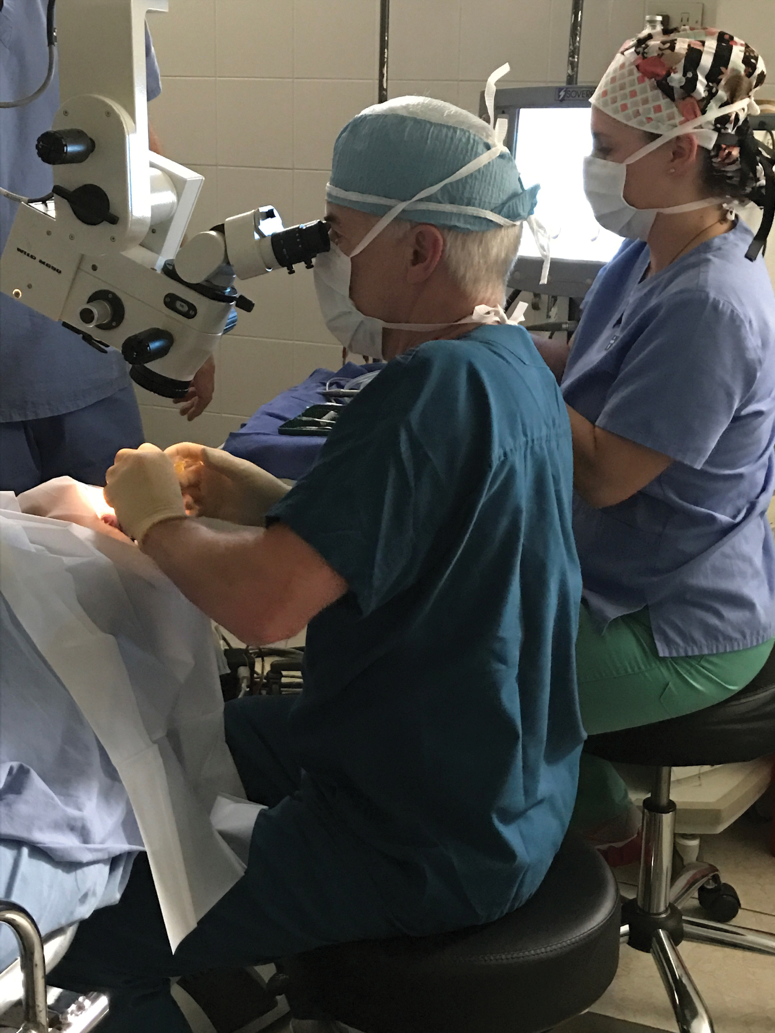
Dr. Larry Patterson in surgery.
This most recent trip, said Larry, provided an opportunity to do the largest number of surgeries that they had ever performed on a mission trip. “We did the most we have ever done. It went smooth and it was fun.” He said the highlight of the mission is always the point when he gets to see the patients take their patches off after surgery. He described it as, “Gratifying, humbling, and priceless.”

Dr. Michael Patterson in surgery.
Ray Mays:
The Business of Being in Practice
CRST: How has your input helped effect ECOTN’s growth?
Our growth happened, first of all, by knowing what we wanted to accomplish. Twenty years ago, when Dr. Patterson brought me on board, we developed a business plan by identifying what we wanted to get out of life and then working backwards from there to develop a blueprint that would enable us to achieve those goals. Then we started doing things that neither of us had ever done before: We bought two optometry practices, then we bought an ophthalmology practice, then we built a new building that included our ASC. We had to learn a lot of things really fast. Once we settled in, it was up to me as the practice administrator to manage and deploy all of our assets.
CRST: What pointers do you have for other practices aspiring to ECOTN’s success?
Despite being two completely different things, the words practice and business are interchanged too much. A practice is something that a professional has: an engineer, an accountant, a lawyer, a doctor, a nurse. All those people have the practice of their profession. I believe using those words interchangeably is the single biggest misunderstanding in our industry. The words are not interchangeable, and they mean different things. Dr. Patterson started a practice in 1988, but the business of ECOTN began in 1998.
The job of any business is to create and keep a customer; our business is understanding what the lifetime value of that customer is. My goal as practice administrator of ECOTN is this: I want every dollar that a person spends on his or her eyes this year. I want to do whatever it takes so that when that patient thinks of his or her eyes, that patient thinks of us.
Our growth is based on attracting a steady stream of new patients, and part of that is making sure that when a new technique emerges we have someone on staff who can perform it. For instance, Michael brought a skillset that we did not previously have, so when he came on board we were able to address the needs of a larger patient pool.
CRST: What keeps ECOTN flourishing?
We have diversified revenue streams, and those streams represent the foundation of the ECOTN house: eye exams, medical, surgery, optical, refractive, ASC, and real estate. All these things are holding up the house of ECOTN, and we don’t have one pillar that is so large that, if it collapsed, the whole house would cave. For instance, when the LASIK market slowed down, we simply added more slots for eye exams, and it wasn’t a big deal. We continued to grow because we had not let the LASIK pillar of our practice grow too large. Meanwhile, other eye care businesses that were too dependent on their LASIK revenues crumbled.
CRST: What’s ahead for ECOTN?
We have an opportunity to make a significant acquisition that would double our size almost immediately. We are looking at this from every angle. Are we happy where we are with our 10% annual growth? Is adding four or five more offices going to make us happier and improve our lives, or is it going to add a level of frustration that we don’t need? For us, the overall picture is more about return on time and energy as opposed to money; however, I do believe you have to keep growing or you die—that’s just how cycles work. It’s a big decision.


